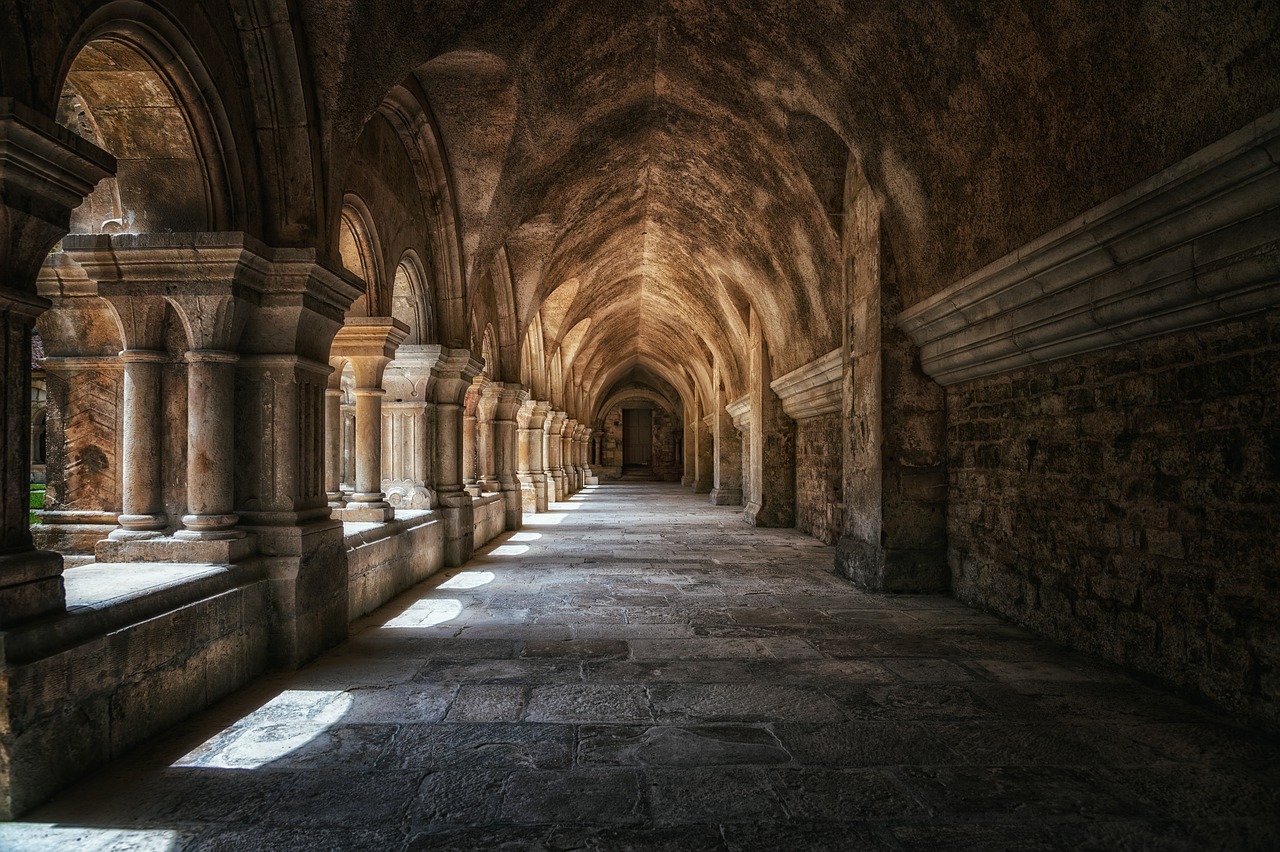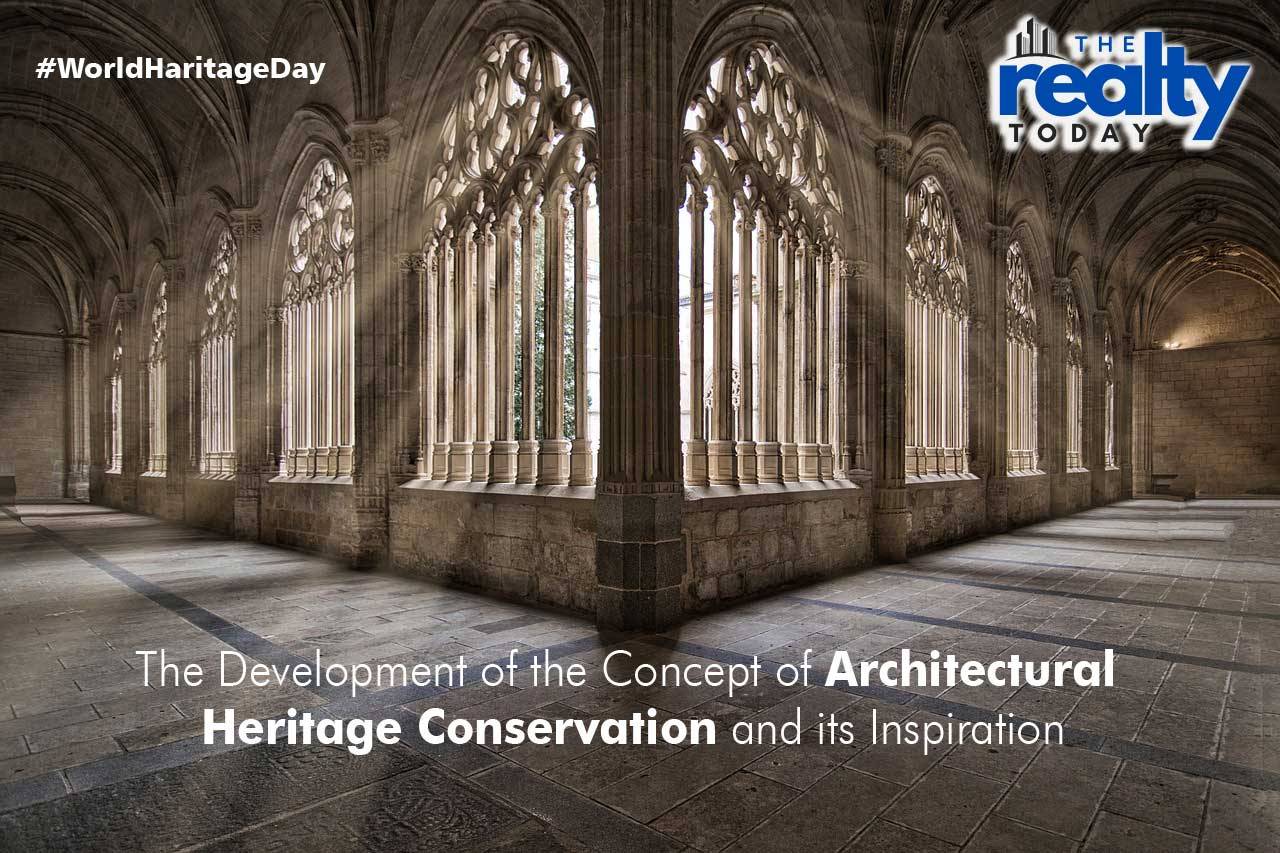UNESCO (United Nations Educational, Scientific and Cultural Organization) and ICOMOS (International Council on Monuments and Sites) have been exploring and guiding the conservation of the environment, cities, and buildings since their establishment. They have accumulated a wealth of experience. Since the start of this century, experts from the UNESCO World Heritage Committee have thought it was time to shift the process of architectural heritage conservation. They are gradually becoming aware of the objective reality of urban development, that historic cities are facing conflict between conservation and development and that architectural heritage conservation can no longer focus only on the conservation of buildings. The conflict between sustainable development and heritage conservation is a balancing act between preserving the importance of heritage and allowing sustainable development. Thus the Recommendation on the Historic Urban Landscape was created.

In 2011, UNESCO adopted the Recommendation on the Historic Urban Landscape, which addresses the negative impact of urban development on heritage conservation and the contradictions and problems between architectural heritage conservation and modern urban development. It argues that rigid and dogmatic conservation strategies need to be adapted to a city’s social context and economic environment. History and development should not be opposites but rather mutually beneficial. The historic urban landscape is an approach that incorporates both the historical environment and contemporary space into the conceptual scope. The conservation of architectural heritage in urban spaces is not only about preserving the historical buildings of the past but also about uniting stakeholder groups, identifying architectural heritage, gaining a collective cultural identity, finding a sense of place and civic pride for residents, allowing everyone to appreciate the cultural values of the city today, and creating a cultural identity for future urban planning through this process.
Before 2000, the definition and scope of architectural heritage conservation were based on a series of ICOMOS charters, resolutions, and declarations surrounding The Venice Charter in 1964. In 1987, the definition and scope of architectural heritage conservation in The Washington Charter were gradually extended beyond protecting the building itself. The article provide a new concept of architectural heritage conservation, defining the concept of architectural heritage and its historic location and larger historic urban areas. In addition, it defined the notion of holistic conservation.
In 2005, the historic landscape of cities was first introduced in the Vienna Memorandum adopted by UNESCO, stimulating a new way of thinking. In 2011, the term was formally introduced in the Recommendation on the Historic Urban Landscape, which pointed out that change is considered part of the urban tradition and was widely discussed. Reviewing and summarizing the evolution of architectural heritage conservation reveal that the definition and scope of architectural heritage conservation have changed from The Venice Charter to the Recommendation on the Historic Urban Landscape.
DEVELOPMENT OF THE DEFINITION OF ARCHITECTURAL HERITAGE CONSERVATION
In 1931, the Athens Charter for the Restoration of Historic Monuments was established. It proposed the need to study the suitability of decorative flowers and trees for certain monuments or groups of monuments, to eliminate all forms of advertising and the erection of unpleasant electric poles in the vicinity of monuments of artistic and historical value, to prohibit the construction of noisy factories and towering pillars, and to better protect the monuments themselves. The Athens Charter for the Restoration of Historic Monuments was the first official document on the protection of cultural heritage to be accepted at the international governmental level. In a sense, it was the beginning of the formation of an international consensus.
Subsequently, in 1964, The Venice Charter was formed. It argues that monuments cannot be separated from the history they represent and the environment in which they were created. Historic monuments include the monuments themselves and their historical environment. The charter was an essential moment in the cultural debate, as it expanded the definition of historic monuments, emphasized the protection of the environment in which these monuments are located, and accelerated the expansion of conservation standards from individual buildings and groups of buildings to buildings and the environments with unique civilizations that they contain. Based on the Athens Charter for the Restoration of Historic Monuments, it reaffirmed the scope and significance of heritage conservation. More important, it expanded the definition of heritage conservation and provided a complete definition of architectural heritage conservation. However, it is not perfect, as it focuses on single historic site conservation, ignoring the problem of the city, and therefore the macro-level.
In the stage, the focus was on historical heritage conservation of a single substantial space, and the scope of conservation attention was narrowed. However, the scope of monument conservation has changed as the understanding of conservation value has changed and expanded. The object of conservation has gradually expanded from a single historical building to the level of historical areas. The Athens Charter for the Restoration of Historic Monuments formed a preliminary understanding of the environment surrounding historical buildings.
The concept of architectural heritage conservation has been widely promoted and accepted through the definition of the historic urban landscape in the Recommendation on the Historic Urban Landscape, which expanded the scope of architectural heritage. Moreover, the scope change in architectural heritage conservation documents triggered changes in programmatic documents for architectural heritage conservation. In terms of connotation, some critical changes occurred in architectural heritage conservation documents after 2000.

DEVELOPMENT OF THE FOCUS OF ARCHITECTURAL HERITAGE CONSERVATION
A major underlying force in the evolution of heritage conservation is the shift in focus from the physical structure of heritage itself to the meaning that heritage conveys. The Burra Charter states that cultural significance is embodied in the place itself its fabric, settings, use, association, meaning, recording, related places, and related objects. Such significance is an essential aspect of an object assigned by an individual or society. Meaning is why heritage is valued and why it is preserved.
The UNESCO Universal Declaration on Cultural Diversity in 2001, the Convention for the Safeguarding of the Intangible Cultural Heritage in 2003, and the Convention on the Protection and Promotion of the Diversity of Cultural Expressions in 2005 regarded the conservation of architectural heritage as an essential part of cultural diversity and emphasis the importance of culture. Culture has become the conceptual basis for the conservation of architectural heritage. Architectural heritage is the concept not only of material heritage but also of culture. The Convention for the Safeguarding of the Intangible Cultural Heritage in 2003 recognized that intangible and material cultural heritage are interdependent. Such heritage is also a crucible of cultural diversity and a guarantor of sustainable development. The Xi’an Declaration on the Conservation of the Setting of Heritage Structures, Sites and Areas in 2005 further extended the scope of the conservation and continuation of architectural heritage to relevant intangible heritage. The Recommendation on the Historic Urban Landscape in 2011 recognized the correlation between heritage and environmental background. It provided a new perspective and methodology for architectural heritage conservation. This shift from focusing on tangible attributes to including intangible attributes is an essential aspect of the evolution of conservation concepts.
DEVELOPMENT OF THE SCALE OF ARCHITECTURAL HERITAGE CONSERVATION
In terms of the content of the documents the architectural heritage conservation documents show a trend of systematization and development. Starting with The Venice Charter in 1964, the scale of conservation has been constantly updated with the development of the times.
In 1976, UNESCO adopted the Recommendation Concerning the Safeguarding and Contemporary Role of Historic Areas, which stated that new development can destroy the environment and features of historic areas and that architects and city planners should exercise care to ensure that monuments and views of historic areas are not destroyed and that historic areas can be integrated harmoniously into contemporary life as a whole. Moreover, it emphasized that historic areas can be integrated into contemporary life as an integral part of the city as a whole. In 1987, The Washington Charter was formed. It points out that all cities and communities, whether developed gradually over a long period or intentionally created contain the history of all sorts of social manifestations, and their natural and artificial environments. These entities embody the value of traditional urban culture. Building on the Recommendation Concerning the Safeguarding and Contemporary Role of Historic Areas, it expanded the concept and content of the conservation of architectural heritage. It established the concepts of historical sites and larger historic urban areas. Compared to The Washington Charter, the recommendation placed more emphasis on buildings and the relationship between green space and open space, the relation between towns and urban areas and the surroundings, updating the evolution of history and the relationship between historic areas and urban development. In 2000, the European Landscape Convention recognized that all landscapes should be viewed as valuable and vital in the healthy development of individuals and societies. The convention emphasized that all landscapes have significance and provide a sense of identity for urban development. In 2005, ICOMOS issued the Xi’an Declaration on the Conservation of the Setting of Heritage Structures, Sites and Areas. It pointed out that the concept of heritage, in addition to the protection of the material body, should include the relationship between that body and nature, intangible heritage, the sociocultural environment, and the relationship with the environment itself as indispensable parts of heritage value. It allowed the architectural heritage to be protected together with the environment, emphasizing the cultural importance of the environment. It systematically declared that the relevant setting is an indispensable component of the integrity of the heritage value, not an optional appendage. In 2011, the Recommendation on the Historic Urban Landscape defined the concept of a historic urban landscape as an urban area generated by the historical accumulation of cultural and natural values and attributes. It extended beyond the concept of a historic centre or whole to include a broader urban background and its geographical environment.
The Recommendation on the Historic Urban Landscape held that architectural heritage conservation is systematic and sustainable, rather than static conservation for a specific type of material heritage. It emphasized the inherent relevance of various heritage elements. It was a living exploration of architectural heritage conservation in the field of urban planning, intending to maintain a balance between architectural heritage and contemporary needs. Its purpose was to integrate the whole development of history and culture into each part and area of conservation, ensure the inheritance and sustainable development of history and culture, treat architectural heritage and urban space as a system, establish identity from the individual to the whole, and strengthen the spirit of place. In 2014, the Florence Declaration elaborated landscape as a rich concept encompassing heritage as a synthesis of nature and culture. Therefore, landscape is increasingly becoming a paradigm for harmonious development, offering new ideas for integrating economic, social, and environmental development.
With the development of the times, heritage conservation documents have elaborated on the heritage concept of historic buildings and monuments and included concepts of historic towns, historic gardens, and historic areas. The relationship with the city, from architectural objects to landscapes, is increasingly important.

ATTACHING IMPORTANCE TO THE INVESTIGATION AND UTILISATION OF ARCHITECTURAL HERITAGE
Different cities have different cultural forms and physical and geographical conditions, so they will approach the preservation of their heritage culture and achievements in different and diverse ways. Therefore, it is essential to carry out an extensive survey and assessment of architectural heritage and understand the distribution of heritage resources in each city, as this is an important measure to ensure the most efficient conservation of heritage achievements. From focusing on individual heritage to the conservation of the city as a whole, the protection of architectural heritage will be the result. Focusing on the interactions of architectural heritage will enable the conservation of heritage to be closely integrated into the development strategy, thus making the conservation of architectural heritage systematic and strategic. The use of heritage based on resource investigation adapts to the material and spiritual needs of modern society, enhances the cultural characteristics and vitality of the city, and at the same time promotes sustainable urban development.
EXPLORING THE HOLISTIC CONSERVATION OF SPECIFIC AREAS
As the product of a specific environment, architectural heritage is a cultural form that cannot stay in isolation for conservation; rather, conservation should be based on more extensive context and planning, as such heritage is inseparable from people’s lives. Space is a human creation, dependent on the existence of people and interaction with them, and the conservation of architectural heritage space is the conservation of architectural heritage as a whole. Spatial analysis can lead to a more scientific recognition and better understanding of the nature of architectural heritage in urban space. It also shows that architecture is the science of art and the geometric forms of architecture. Based on the above theory, architectural heritage space can be analyzed and studied from a holistic perspective to grasp the overall characteristics of the spatial system. Second, the integration of architectural heritage should be studied dynamically to identify the essence and causes. Finally, the focus should be on the stages of the spatial development of architectural heritage and its interaction with the city.

FINDINGS AND DISCUSSION
In recent decades, the definition of architectural heritage has expanded from the building itself to the site and from the surroundings to the urban background. It has become the direct cause of broadening values that are considered to have cultural significance, and these new values are now part of all decisions taken to conserve architectural heritage. This evolution has moved from the traditional view of conservation, protecting the material fabric of objects that are assigned monument status, to the current view, which aims to protect the values represented by architectural heritage ranging from objects to landscapes.
This article outlines recent developments in the definition and scope of heritage and provides an overview of them from the perspective of sustainable development. It aims to provoke reflection on the conservation of architectural heritage in historic cities to adapt to the needs of sustainable development and contribute to heritage conservation. The scope of what constitutes heritage is expanding, shifting from the physical to the landscape and the environment, and the definition of heritage is also expanding. Additionally, heritage studies are becoming more tolerant of change. Therefore, the current paradigm of conservation of architectural heritage is a balance between conservation and development.
CONCLUSION
The scope of conservation of architectural heritage has expanded from historic areas to historical urban areas and their surrounding areas, emphasizing the holistic conservation of the surrounding area, historical relics, and historic urban areas. The Washington Charter emphasized the conservation of historic districts, summarized experiences and practices in many countries, and clarified historical area conservation content because the historical block initially formed a relatively complete protection research system. Nevertheless, with many urban renewal practices and contradictory architectural heritage conservation practices deepening the frequency and various social problems of architectural heritage, the Recommendation on the Historic Urban Landscape paid more attention to architectural heritage conservation to coordinate with the development of the surrounding area and to realize the sustainable conservation of architectural heritage and development.
The analysis of the architectural heritage conservation documents promulgated by ICOMOS and UNESCO reveals that the definition of architectural heritage conservation is no longer limited to material objects. Rather architectural heritage has been conceptualized in terms of conservation connotations, objects, and scope. In this context, the definition of architectural heritage conservation has changed from The Washington Charter to the Recommendation on the Historic Urban Landscape.
This article focuses on the historical lineage and conceptual development of architectural heritage conservation. However, it is not a purely theoretical study; rather, it starts from the theory and identifies its implications for the conservation of architectural heritage in historical cities. The in-depth analysis of the development of the concept of architectural heritage can be helpful for the planning and design of urban renewal, coordination between urban development and conservation, and the practice of architectural heritage conservation in urban design and urban management. Additionally, this article can add to the applicability of architectural heritage conservation in urban development, thus contributing to developing architectural heritage conservation principles applicable to cities. As articulated by UNESCO, architectural heritage conservation is a form of urban conservation that does not replace established doctrines and conservation methods but integrates environmental protection, policy development, and heritage conservation practices. However, architectural heritage conservation in cities involves all levels of urban history and is a comprehensive and extensive system that requires multidisciplinary participation. This article briefly reviews UNESCO and ICOMOS documents and conferences. It analyses the conceptual development of architectural heritage conservation to provide architectural design, urban conservation, and urban planning practitioners with an understanding of the historical context of architectural heritage conservation, promoting cross-collaboration in urban architectural heritage conservation research and enhancing the importance of architectural heritage conservation in more fields.
With the deepening and updating of understanding and concepts, the value of architectural heritage and the concepts of heritage conservation are no longer limited to the building but have expanded to include the historical and cultural framework, comprehensive values and roles, and sustainability. Architectural heritage conservation has developed into a specialized science involving architecture, planning, history, archaeology, and sociology. Therefore, the challenges are to learn from the current conceptual development of architectural heritage conservation in historical cities, to explore and develop conservation theories and methods in line with the characteristics of historical cities and architectural heritage, and to balance the relationship between conservation and development.










.png)